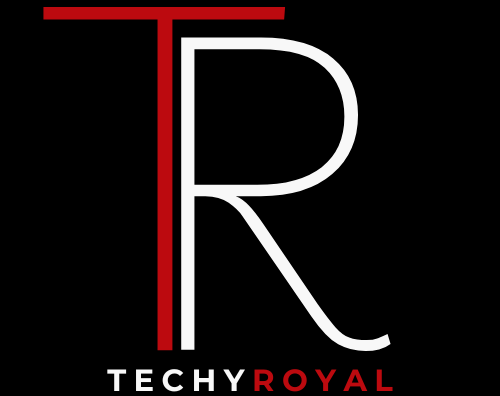Everything You Get Under the Jira Demo vs Confluence Demo
Jira and Confluence are widely used in the development of software, but not many know the difference between them. They both perform the same functions but in a slightly different way, which may affect your experience if you’re not aware of it. Read on to learn everything you get under the Jira Demo vs Confluence Demo and decide which one is right for you!
What happens under the hood
Under the hood, both of these software solutions are very similar. The difference is how they look. One features a powerful and robust user interface, while the other provides a more simple and minimalistic interface for its users. In terms of features, both systems offer a mix of SCRUM, Kanban and Test Automation functionality that can help team members manage their workflow and collaborate on projects to stay organized in their workloads. The winner comes down to what your preferred workflow management system may be or which looks better to you as you’re trying them out.
It also depends on whether you’re looking for an application that’s tailored towards Agile practices like Scrum or something more general. Confluence is great if you want to share documents with other teams who don’t use Jira, but it doesn’t provide much in the way of automated testing tools (although it does have some). Conversely, Jira has excellent test automation tools but might not fit with all business needs outside of project management. Whichever one you choose, whichever one fits best with your company’s needs, is up to you. But, this should give you enough information to start comparing and contrasting so that you can make the right decision for your team.
Why do people love Atlassian products?
At Atlassian, we believe that companies only do well when they have great products to work with. Our software helps businesses all over the world work better and more efficiently. In turn, this boosts their company morale and helps them be more profitable. Atlassian offers a suite of software for almost any type of project or industry, including bug tracking and issue management software (JIRA), content management systems (Confluence), as well as development tools like our IDE Anjuta, SVN Server and Bamboo CI server. What is really cool about using Atlassian is that you can use these tools together in one place – so if you are looking for an alternative to Microsoft Project but still want to track your tasks in a Gantt chart, you can use JIRA Agile boards which integrate into Confluence pages.
If you are just getting started with project management and need an easy way to start collaborating, try out Confluence! We have a demo version so you can see what it has to offer before making your purchase decision. Check out the video below to get a feel for how easy and powerful Atlassian software is. If you are new to Atlassian, it’s worth starting with Confluence because the interface is so intuitive and easy to use. But don’t worry – once you get a handle on everything, feel free to explore some of our other amazing tools! We recommend checking out JIRA Software because it’s perfect for large teams and IT departments managing complex projects.
When your team grows past 50 people, JIRA becomes very valuable because it offers features such as Kanban boards, change request routing, and time tracking that help you manage all of your workflows from one central location. And then there is also Redmine: designed to make group collaboration easier by providing a web-based project management system for small teams working on projects together. And finally, if you’re just starting up with software development then we recommend trying our IntelliJ IDEA product: based on the best open source IDE Eclipse plugin architecture.
What is what you get when you buy Atlassian products
Atlassian is a global software company with two great products that we use at Addepar: Jira and Confluence. The difference between these two products is that one was created to help people manage agile projects, while the other was created for teams of any kind to store and share documents. There are some differences between the free versions of each product, but you will get many features from both programs in your first 30 days when you sign up for a free trial.
After 30 days, there are still many useful features available, but you will have to start paying for most of them. It’s worth noting that this also includes excellent customer service support with either product if anything goes wrong; Atlassian seems to always have somebody on-call 24/7/365.
When I signed up for a demo account for either product, I got my request responded to within minutes by an agent who helped me out and answered all my questions thoroughly. In addition, they made sure I had full access to all their help documentation so I could find answers myself without needing assistance from their team! If you’re not sure which tool would be best for your needs, they also offer a good selection of pricing options so you can find something that fits into your budget.
To sum it up: Jira offers more functionality than Confluence in its base version, but Confluence has much more room to grow as it matures. If price is not an issue, go with the tool that will suit your needs best – don’t feel like you need to settle just because it doesn’t cost money right away! Personally, I prefer using Jira over Confluence due to its greater functionality. I enjoy having an easier time organizing tasks and keeping track of deadlines. And it’s nice knowing that someone will answer my emails promptly no matter what time of day or night.
How to set up your Atlassian environment
Open Atlassian with a web browser on your device.
Sign up for an account (if you haven’t already). When you create your account, enter in a company name to connect this environment to your company’s other environments and services. The first time you log in, you’ll need to provide administrator credentials for the root folder that is created when you do this (typically Atlassian). Open Atlassian by clicking Atlassian on MacOS or Atlassian on Windows 10. Click dashboard. After that, select create new and then select add-on. If you’d like to install Jira and want more features than are included in the free version, there are options below that will allow that installation.
If you’d like to install Confluence, it is also available below. Keep in mind that some of these add-ons require other products to be installed as well. For example, if you want to use wikis, blogs, spaces, and wikis as well as Confluence itself, you would need to have Jira installed too. Check out our blog post about everything you get under them. which provides details about what each product offers. Choose the one that you want to install. In this demo, we’re installing Jira. Select Jira add-on. You can choose between two versions: Basic or Professional Edition.* We recommend installing the Professional Edition so you can enjoy all its benefits. Follow instructions from there and set up your own individual space within minutes!
Which product suits me best
It all depends on what you’re looking for! The two products have some similarities, but also have some major differences that might help you decide which one is better suited for your needs. One similarity is that both offer a demo so you can get a feel for how it would work with your team before making the purchase. Another similarity is that both use an intuitive interface to organize content and make it easy to find anything in seconds – as well as providing advanced search options to make finding information even easier if needed. Both offer users a similar range of features, though not quite identical (more on this below). Finally, both come with 12 months of updates and upgrades so they will stay current and up-to-date with any new features or improvements. But there are a few key differences between the two:
1) Jira offers project management software specifically tailored to agile development processes, while Confluence offers project management software specifically tailored to large organizations with long product life cycles.
2) Jira comes with built-in tools for tracking bugs and issues while maintaining an organized bug report backlog, while Confluence doesn’t come with these tools.
3) While both are excellent options for collaboration among remote teams, only Jira supports offline editing capabilities where every change made when offline is synced when connectivity is restored–while this isn’t important for everyone’s needs, it could be really useful for some users depending on their team setup. 4) As far as pricing goes, Jira starts at $10 per user per month for small businesses, $12 per user per month for medium businesses, and $25 per user per month for enterprise–this pricing includes everything from installation to support.




